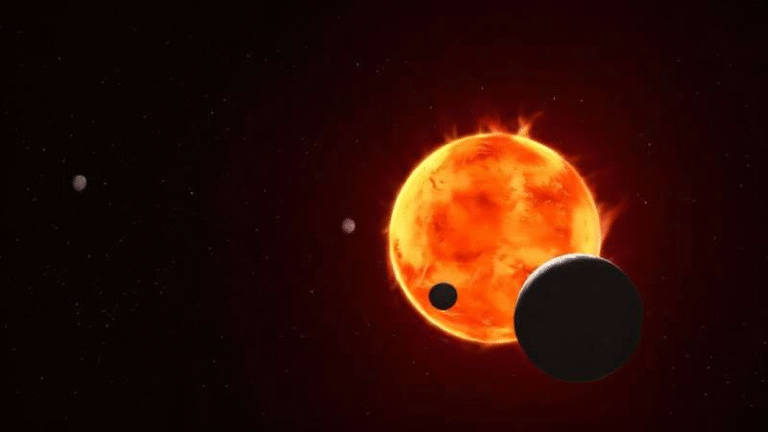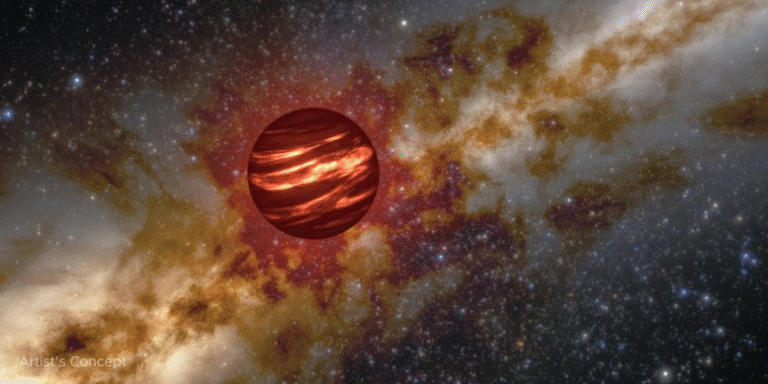Starship Could Cut Travel Time to Uranus in Half, Says New MIT Study

A new study from researchers at the Massachusetts Institute of Technology (MIT) has revealed that SpaceX’s Starship could dramatically shorten the journey to Uranus, reducing the travel time from more than 13 years to just about 6.5 years. The study, presented at the 2025 IEEE Aerospace Conference, explores how Starship’s unique design and capabilities could completely reshape mission planning for the long-awaited Uranus Orbiter and Probe (UOP) mission — a top priority in planetary science.
Why Uranus Matters So Much
Uranus might not get the same attention as Mars or Jupiter, but it’s one of the most intriguing and least explored planets in our solar system. Only one spacecraft has ever visited it — Voyager 2 — which performed a flyby back in 1986, nearly 40 years ago. Since then, Uranus has remained a distant mystery.
Scientists are especially interested in Uranus for several reasons:
- The planet rotates on its side, with its poles pointing almost directly toward the Sun — a feature unique among planets.
- It has a complex magnetic field that doesn’t align with its rotational axis.
- Its system includes 27 known moons, several of which might hide subsurface oceans beneath icy crusts.
- Most importantly, ice giants like Uranus are common among exoplanets, meaning that studying it up close helps us understand other planetary systems beyond our own.
The 2022 Planetary Science Decadal Survey by the U.S. National Academies of Sciences declared the Uranus Orbiter and Probe mission as the highest-priority flagship project for the next decade. However, with launch opportunities mainly available in the 2030s, the mission’s feasibility has been limited by existing rocket technology — until now.
How Starship Changes Everything
SpaceX’s Starship is designed to be a fully reusable, heavy-lift launch system capable of carrying large payloads into space — and, crucially, refueling in orbit. These two features could revolutionize how we explore the outer solar system.
1. On-Orbit Refueling
Traditional rockets must carry all the fuel they’ll ever need from Earth, limiting how much payload they can lift. Starship, however, can refuel while in orbit, enabling it to launch with less fuel initially and then top up before heading out on long journeys. This refueling capability could allow a Uranus mission to skip complex gravity-assist routes that usually involve swing-bys of Venus or Jupiter. Instead, it could take a direct, high-energy trajectory, slashing the travel time by nearly half.
2. Aerocapture and Aerobraking
Another innovative idea proposed by the MIT team is to use Starship itself as an aerobraking shield. Normally, when a spacecraft arrives at a distant planet, it must burn large amounts of fuel to slow down enough to be captured into orbit. The researchers suggest that Starship could instead dip into Uranus’ upper atmosphere, using drag to slow down — a maneuver known as aerocapture.
Since Starship is already built to withstand intense heat during reentry on Earth and Mars, it could theoretically handle the thermal loads of Uranus’ atmosphere with some modifications. This approach would save tremendous amounts of fuel and make orbit insertion much more efficient.
The Numbers Behind the Study
The paper, titled “Starship as an Enabling Option for a Uranus Flagship Mission” by Daniel Gochenaur and colleagues at MIT, models several mission profiles using Starship’s full potential.
Here are the standout figures from their analysis:
- A high-energy direct trajectory with orbital refueling and aerocapture could reach Uranus in about 6.5 years.
- A more conservative profile — using some propulsive braking instead of full aerocapture — could still arrive in 8.5 years.
- With seven refueling flights, Starship could deliver nearly 6 metric tons of payload to Uranus.
- Unlike traditional designs, this route requires no gravity assists, simplifying mission planning and reducing schedule risks.
This speed improvement isn’t just about saving time. Shorter travel times mean lower mission costs, simpler operations, and fewer risks associated with long-duration management. For example, a 13-year cruise demands that mission staff, systems, and funding remain stable over more than a decade. Reducing that to 6 or 7 years makes the mission more manageable and financially sustainable.
The Challenges Ahead
While the potential is exciting, the plan faces some major hurdles.
First, Starship’s orbital refueling — though part of SpaceX’s design goals — has not yet been demonstrated. It’s a complex process that involves transferring cryogenic propellant in microgravity, a technology still in development.
Second, using Starship as an aerocapture vehicle at Uranus remains purely theoretical. No spacecraft has ever attempted aerocapture at an ice giant, and doing so would require precise control of entry angles, heat loads, and atmospheric modeling.
Third, mission timing is crucial. The optimal launch windows for Uranus missions occur roughly every 17 years. If the 2030s window is missed due to development delays or funding issues, the next opportunity would be in the mid-2040s — extending humanity’s wait for a dedicated Uranus mission to nearly 70 years since Voyager 2.
Finally, even though the Uranus mission is top priority on paper, it has yet to receive official funding approval from NASA. Given recent budget uncertainties and leadership changes, it’s unclear when that green light will come.
Why Shorter Travel Times Matter
Cutting the travel time from 13 years to around 6 isn’t just convenient — it changes how missions can be designed and executed.
- Mission teams wouldn’t need to maintain operations for a decade and a half, reducing long-term costs.
- Scientific instruments could be designed with shorter lifespans, lowering development costs and complexity.
- Public engagement would likely remain stronger for a faster mission, as interest tends to wane over very long timelines.
Additionally, faster access to Uranus would allow scientists to study its seasonal changes more effectively. Uranus takes 84 Earth years to complete one orbit around the Sun, meaning each season lasts over 20 years. A shorter mission time could better align arrival with key seasonal transitions, improving science return.
The Bigger Picture: Ice Giants and Exoplanets
Uranus and its cousin Neptune belong to a class known as ice giants — planets dominated by water, ammonia, and methane ices. They represent a transitional type between rocky worlds like Earth and gas giants like Jupiter.
Interestingly, planets of this size and composition are the most common type of exoplanet detected in other star systems. Studying Uranus up close can therefore give astronomers a model for understanding thousands of similar worlds orbiting distant suns.
A Uranus mission could help answer fundamental questions:
- How do ice giants form and evolve?
- Why is Uranus tilted so dramatically?
- What are its moons made of, and could they support subsurface oceans?
- How does its bizarre magnetic field behave over time?
A detailed orbiter mission could finally unlock these mysteries — and Starship’s heavy-lift and refueling system might be what makes it possible.
Looking Forward
If SpaceX successfully demonstrates orbital refueling and continues its recent streak of improved flight tests, Starship could be ready for deep-space use by the end of the decade. The MIT study doesn’t suggest Starship will directly conduct the Uranus mission, but rather that its capabilities could make such a mission far more efficient and affordable.
For now, the Uranus Orbiter and Probe remains an ambitious concept awaiting funding. But with the rapid development of Starship and growing scientific interest in ice giants, the dream of returning to Uranus might soon move from concept to countdown.
Research Paper:
Daniel Gochenaur et al., Starship as an Enabling Option for a Uranus Flagship Mission, IEEE Aerospace Conference, 2025.





